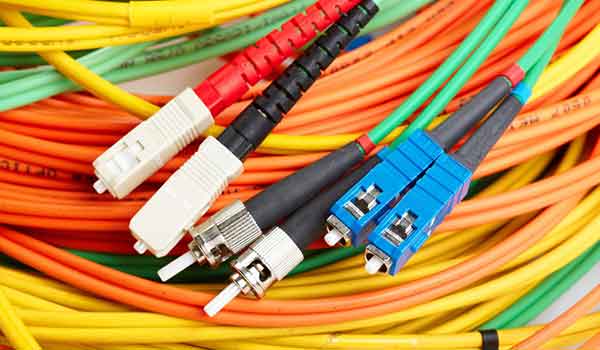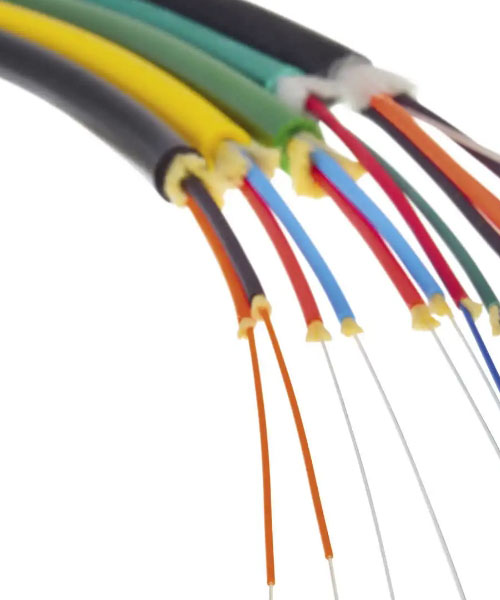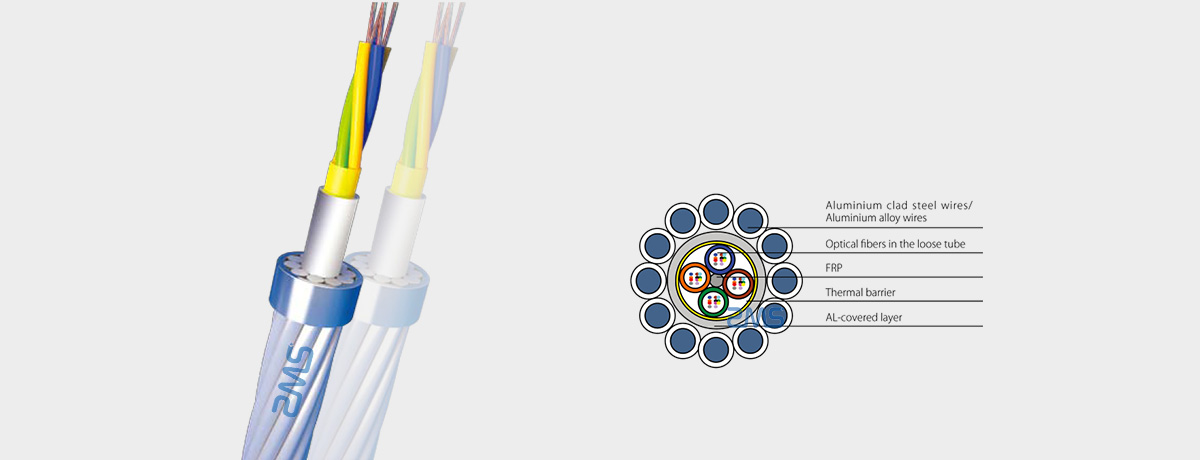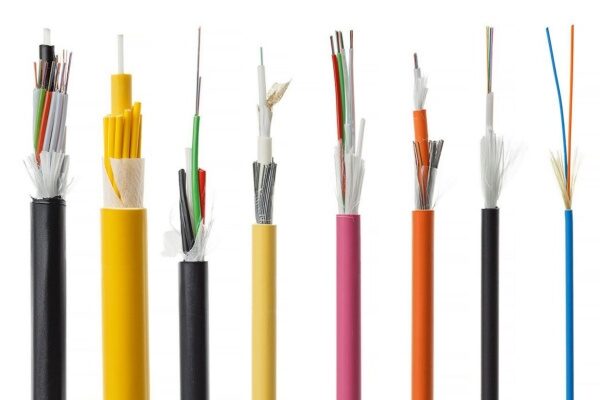光ファイバーケーブルは現代の通信ネットワークの重要なコンポーネントです, 長距離でも高速データ通信が可能. 企業や個人が高速性への依存を強めているため、, 信頼できるインターネット接続, 光ファイバー技術はデータ転送のゴールドスタンダードとして浮上しました. 2 つの主要なタイプの光ファイバー ケーブルが市場を支配している: シングルモード と マルチモード 光ファイバーケーブル.
これら 2 種類の光ファイバーの違いを理解することは、ネットワーク インフラストラクチャについて情報に基づいた意思決定を行うために不可欠です。, それぞれ特定の用途に応じて長所と短所があるため、. この記事 VERI ケーブルの詳細 シングルモード光ファイバーケーブルとマルチモード光ファイバーケーブルの主な違い, デザインなどの要素を探る, パフォーマンス, 料金, と使用シナリオ.

1. 光ファイバー技術とは?
シングルモードファイバーとマルチモードファイバーを比較する前に, 光ファイバー技術の基本を理解することが不可欠です.
光ファイバーケーブルは、電流ではなく光信号を使用してデータを送信します。. ガラスやプラスチックの細い糸で構成されています。 (コア), 光をコアに反射するクラッドで囲まれている. このプロセス, 呼ばれた 全内部反射, 強度の損失を最小限に抑えながら、光信号を長距離に伝えることができます。. 光ファイバーケーブルは、より高い帯域幅を提供できることで知られています, 干渉の減少, 伝送範囲が以前よりも拡張されています。 従来の銅線ケーブル.
2. シングルモード光ファイバーケーブル
2.1 デザインと構造
シングルモードファイバー (SMF) 1つの経路に沿って光信号を運ぶ能力にちなんで名付けられました, またはモード, 一度に. これは、非常に小さな直径のコアを使用することで実現されます。通常は約 8 に 10 ミクロン. コアを囲むクラッドは通常、 125 ミクロン, これはほとんどの光ファイバーケーブルの標準です.
コアサイズが小さいため、光の反射数が制限されます。, 減衰を減らす (信号損失) 信号を劣化させることなくさらに遠くまで伝送できるようにします。. シングルモードファイバーの場合, 光はコアを直線で伝わります, その結果、長距離にわたって信号の歪みが減少し、データ伝送品質が向上します。.
2.2 パフォーマンス
シングルモードファイバーは以下のために設計されています。 長距離通信. 信号損失と歪みを最小限に抑えるため, までの距離でデータを送信できます。 100 信号ブースターを必要とせずにキロメートル以上 (アンプ). これらのファイバーは通常、次の場所で動作します。 1310 nm と 1550 nm 波長範囲.
主な利点は次のとおりです。:
- 高帯域幅: シングルモードファイバーは事実上無制限の帯域幅をサポート可能, インターネットのバックボーン インフラストラクチャや電気通信などの需要の高いアプリケーションに最適です。.
- 最小限の信号損失: コア内の反射が少ないため, 信号損失が大幅に減少します.
- 長距離: シングルモードファイバーは長距離ネットワークに最適な選択肢です, 都市と地域をつなぐ.
でも, シングルモード光ファイバーには通常、より高度な光源が必要です, レーザーなどの, マルチモードファイバーに比べて設置コストが高くなる可能性があります.
2.3 アプリケーション
シングルモードファイバーは次の場合に推奨されます。:
- 電気通信: 長距離電話回線とインターネット サービスは、信号を頻繁にブーストすることなく長距離にわたってデータを送信できるため、シングルモード ファイバーに依存しています。.
- ケーブルテレビ (いくつか): テレビやインターネット サービスを広いエリアに配信するための大容量ネットワークで使用されます。.
- データセンター: 大規模なデータセンターでの使用が増加しています。 高帯域幅と長い伝送距離 必要です.

3. マルチモード光ファイバーケーブル
3.1 デザインと構造
マルチモードファイバー (MMF) 複数の経路に沿って光信号を運ぶことができるため、その名前が付けられました。, またはモード, 同時に. マルチモード ファイバーのコアはシングルモード ファイバーのコアよりも大幅に大きい, 通常は周りに 50 に 62.5 ミクロン 直径で. より大きなコアにより複数の光信号が可能になります (またはモード) 一気に伝播する.
このデザイン, 同時により多くのデータがケーブルを通過できるようにします, より多くの信号反射とモード分散が発生します (光パルスの拡散), 長距離では信号損失が大きくなる. でも, 短距離用, マルチモードファイバーは効率的に動作し、コスト効率が高い.
3.2 パフォーマンス
マルチモードファイバーは以下に最適化されています。 近距離通信, 通常は以下です 2 キロメートル, 次のような環境でよく使用されます。 ローカルエリアネットワーク (LAN) と データセンター 短距離での高速データ伝送が必要な場合.
主な特徴は次のとおりです。:
- 中程度の帯域幅: マルチモード ファイバーはシングルモード ファイバーよりも帯域幅が狭くなりますが、, 短距離の高速伝送も引き続きサポートします.
- 信号損失が大きい: コアを通過する光の複数のモードにより, 分散と信号損失が大きくなります, マルチモードファイバーが増幅せずにデータを送信できる距離を制限する.
- 波長: マルチモードファイバーは通常、次の速度で動作します。 850 nm と 1300 nm 波長.
マルチモードファイバーの利点の 1 つは、より安価な光源を使用できることです。, そのような LED, シングルモードファイバーよりも初期コストが安くなります. でも, 距離が離れると信号品質がより早く劣化します, 長距離伝送にはあまり適さない.
3.3 アプリケーション
マルチモードファイバーは一般的に次の用途で使用されます。:
- エンタープライズネットワーク: 建物間やフロア間の接続に長距離を必要としないオフィスビルやキャンパスでの使用に最適です。.
- データセンター: データセンター内の短距離データ伝送によく使用されます, サーバーを接続する, ストレージ, およびネットワーク機器.
- LAN: ローカルエリア内でコンピュータとデバイスを接続するために使用されます, ビジネスや学術機関など.
4. シングルモード光ファイバケーブルとマルチモード光ファイバケーブルの比較
| 特徴 | シングルモードファイバー | マルチモードファイバー |
|---|---|---|
| コアサイズ | 8-10 ミクロン | 50-62.5 ミクロン |
| 波長 | 1310 nm, 1550 nm | 850 nm, 1300 nm |
| 距離 | まで 100 km以上 | まで 2 km |
| 帯域幅 | 事実上無制限 | 高い, ただし、シングルモードに比べて制限があります |
| 料金 | 高価な光源と装置により高くなる | 設置コストの削減 |
| アプリケーション | 長距離通信, いくつか, データセンター | LAN, データセンター, キャンパスネットワーク |
| 光源 | レーザ | LEDまたはVCSEL |
| 減衰 | 低い (信号損失が少ない) | より高い (信号損失が増える) |

4.1 帯域幅
シングルモード ファイバーとマルチモード ファイバーの主な違いの 1 つは、サポートできる帯域幅です。. シングルモードファイバー オファー 事実上無制限の帯域幅 単一モードで光を透過するため. 対照的に, マルチモードファイバー 短距離の高帯域幅をサポートしますが、モード分散の影響を受けます, 長距離の帯域幅が制限される.
4.2 距離
シングルモードファイバーは長距離通信用に設計されています, データを送信する機能を備えた 100 km以上 大幅な信号劣化なし. マルチモードファイバー, 一方で, あたりに限られます 2 キロメートル より大きなコアとモード分散のため.
4.3 料金
シングルモード ファイバーとマルチモード ファイバーのどちらを選択するかはコストが重要な要素です. シングルモードファイバーにはより高価な光源が必要です (レーザー) およびトランシーバー, 全体の設置コストと設備コストが高くなる. マルチモードファイバー, 対照的に, LED や垂直共振器面発光レーザーなどの安価な光源を使用するため、設置費用が安くなります。 (VCSEL). でも, 初期コストが低いとパフォーマンスが犠牲になります, 特に長距離では.
4.4 減衰と分散
減衰とは、距離による信号損失を指します。. シングルモードファイバーの場合, 単一の光路により減衰は最小限に抑えられます, これにより、信号が劣化することなく長距離を伝送できるようになります。. 対照的に, マルチモードファイバーは複数の光路があるため、より高い減衰を受けます。 (モード) 互いに干渉し合う.
分散, 具体的には モード分散, もう一つの重要な要素です. シングルモードファイバーは、光信号が伝わる経路が 1 つしかないため、分散がほとんどありません。. マルチモードファイバーでは, モード分散により、光パルスがケーブルを通過する際に拡散する可能性があります。, 長距離では信号の歪みにつながる.

5. どれを選ぶべきか: シングルモードまたはマルチモード光ファイバーケーブル?
の シングルモード光ファイバーケーブルとマルチモード光ファイバーケーブルの選択 いくつかの要因に依存します, 意図したアプリケーションを含む, 必要な伝送距離, そして予算.
- 長距離用途向け: ネットワークで長距離にデータを送信する必要がある場合, 都市間や大規模な通信ネットワークなど, シングルモードファイバー 明確な選択です. 長距離でより高いパフォーマンスを提供しますが、初期費用が高くなります.
- 短距離用, 高速アプリケーション: ネットワークが高速データ伝送を必要とするが、限られた地理的エリア内で運用されている場合, キャンパスやデータセンターなど, マルチモードファイバー 費用対効果の高いソリューションを提供します. 設置コストが安いため、LAN にとって魅力的な選択肢になります。, シングルモードファイバーに比べて距離能力は限られていますが、.
- 将来の拡張性を考慮する: 将来的に帯域幅要件が増加する可能性がある場合, ネットワークがより長距離に拡張される可能性があります, に投資する シングルモードファイバー 長期的なメリットを提供できる, 初期投資が高くても.
シングルモード光ファイバーケーブルとマルチモード光ファイバーケーブルにはそれぞれ長所と短所があります。, どちらを使用するかの決定は、ネットワークの特定のニーズによって異なります。.
